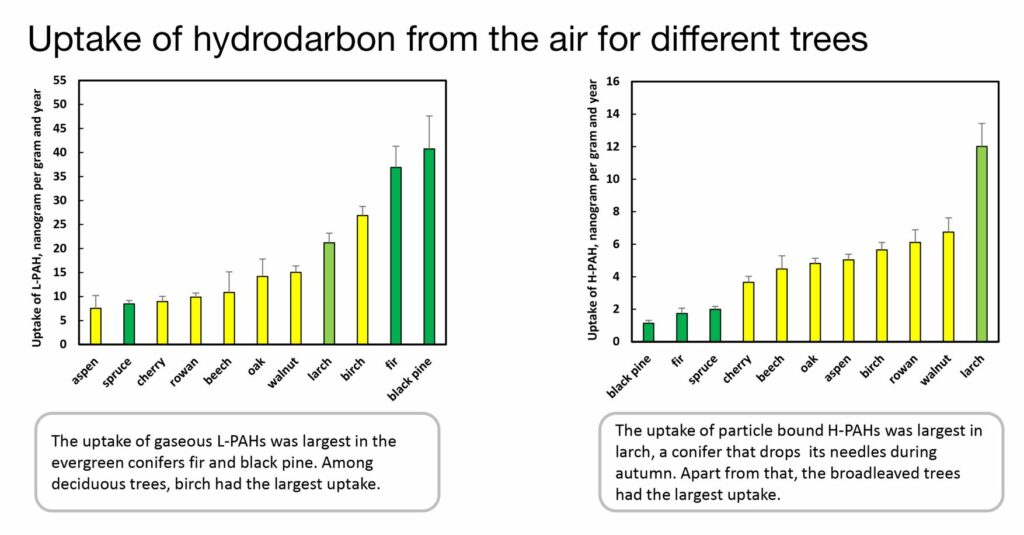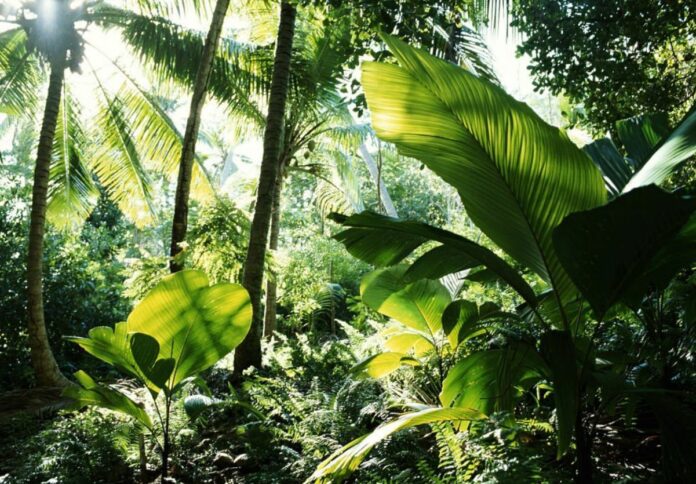Best trees that could reduce your risk of heart disease and airway problems by purifying the air from pollutants.
There are various ways in which trees and other urban vegetation contribute to the health and happiness of city dwellers. Trees’ leaves and needles act as a natural filter, reducing people’s exposure to harmful compounds in the air.
Yet, which trees do the best job of cleaning the air?
Researchers from the University of Gothenburg have analyzed the compounds that they have obtained by collecting leaves and needles from eleven different trees growing in the same location in the arboretum (tree collection) of the Gothenburg Botanical Garden.
“This tree collection,” according to researcher Jenny Klingberg, “provides a unique opportunity to test many different tree-species with similar environmental conditions and exposure to air pollutants.”
Toxic pollutants
A total of 32 contaminants were examined, some of which were attached to particles of varying sizes. Some of them are gaseous. There is a documented link between exposure to air pollution and an elevated risk of cardiovascular and airway disorders.
This study has concentrated on polycyclic aromatic hydrocarbons (PAHs). These pollutants are emitted as a result of incomplete combustion in engines, and the largest source of this is urban traffic.
“Our analyses show that different tree species have different abilities to absorb air pollutants. Conifers generally absorbed more gaseous PAHs than broadleaved trees. Another advantage of conifers is that they also act as air purifiers in winter, when air pollution is usually at its highest,” adds Jenny Klingberg.

Needles provide clean air for many years
The researchers also observed that needles continued to absorb air contaminants for a number of years, but leaves for obvious reasons cannot. Yet broadleaf trees provided additional benefits. They were more effective in removing particles from the air, which is assumed to be due to the fact that leaves have more surface area for particles to adhere to.
“The various species differed more than we expected. Larch, which is a conifer that sheds its needles each autumn, was best in test. Larch trees absorbed the most particle-bound pollutants, but were also good at capturing gaseous PAHs,” explains Jenny Klingberg.
Needles and leaves, on the other hand, don’t help break down pollution more, even though sunlight can start that process. So, there is a chance that the soil under the trees will get dirty when the leaves and needles fall off and break down. This poses a danger to the soil’s ecology, however, this aspect was not explored in the present research published in the journal Ecological Indicators.
“The pollutants do not appear to impact the trees’ photosynthesis; leaf chlorophyll content is just as high in the most polluted areas of Gothenburg compared with trees that grow in less polluted environments. But this likely looks different in cities with even worse air quality,” says project leader Håkan Pleijel.
Urban planning must be done with care
To help the locals’ air quality, you shouldn’t just start planting trees all around the city. The benefit depends on a number of things. A small roadway canyon with a tree-lined alley may adversely affect the dispersion and dilution of air pollutants, resulting in higher local concentrations of toxins on busy streets. This suggests that lower-growing vegetation, like hedges, may be preferred on wind-sheltered narrow roadways. According to the researchers, careful urban design is required, mixing various tree species to maximize air purification and take into consideration other uses and advantages of trees.
“This study contributes to improving our understanding of the ability of trees to clean the air and which species are best at absorbing air pollutants,” adds Håkan Pleijel.
This information is important for urban planning and building cities that are sustainable. Although trees and vegetation may help to improving air quality in cities, reducing emissions is ultimately the most significant approach.
Source: 10.1016/j.ecolind.2022.109681
Image Credit: Getty
